I had donuts on my mind. The donuts were forty kilometers away, at the southernmost point of the Miura Peninsula in the sleepy seaside town of Misaki. Though it was August, for the past seven days most of Kyushu and Honshu had been slammed with a second rainy season. Rivers flooded, sides of mountains came loose and were washed into villages, the rain was relentless. Parts of Saga saw rain fall as if poured from a bathtub. It was biblical and then it broke — the skies opened to a clear blue, and the islands were once again drenched in summer sunlight and I decided to set off for donuts on my electric bike.
Kamakura is my home base. The plan for this column is to do quarterly electric-assist (that is: electric bikes where the motor kicks in when you pedal) bike rides with Papersky, fanning out from Kamakura, exploring some of the neighborhoods and towns I’d otherwise miss were it not for the magic of an e-bike. E-bikes nullify distance and elevation in fascinating ways. Suddenly twenty kilometers is a pretty quick jaunt. Kamakura — and the Miura Peninsula upon which it sits — is mostly mountains. It’s nearly impossible to travel between towns without cresting passes. Some — like the kiridoshi (or “cut road” as the roads were sliced into the mountains) surrounding Kamakura proper — have been in use for nearly a thousand years. On a non-electric bike you find ways to avoid big hills. On an electric, you relish seeing what’s at the top.
My ride begins at Yuigahama Beach at about seven in the morning. I cut through the surfer-friendly Zaimokuza area, and over into the bizarro-world resort of Zushi Marina. Zushi Marina feels like a developer’s wayward attempt to clone Waikiki. Built in 1971 on land reclaimed from the ocean using dirt from, of all places, Kamakura Cemetery, it houses many blocks of hulking apartment buildings that look like Sheraton hotels. Here, retired millionaires live out their days, and Instagram tourists come to take selfies on the palm tree-lined streets. What’s fascinating, however, isn’t Zushi Marina itself, but the socioeconomic disparity between it and the neighboring working-class fishing nook, Kotsubo Kaigan, just a few meters away.
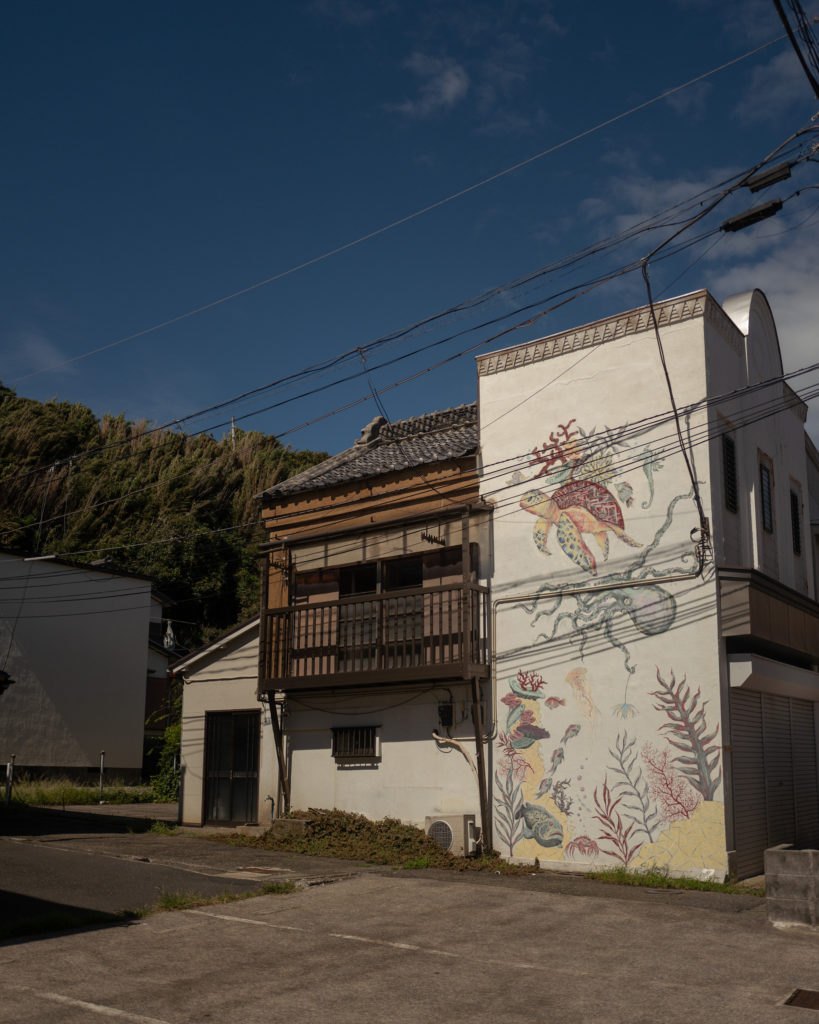
Kotsubo Kaigan is replete with ratty, old, tiny fishing boats manned by quick-to-laugh, leather-faced fishermen, a small fish market, and a few fish-focused truly delicious teishoku restaurants (Meshiyacchan, Yūkishokudō). The sea defines the place and the vibe is generational and hardworking, salty and earthy — in diametric opposition to the polished phoniness of the haunted Marina. I love it — both Kotsubo Kaigan and the extreme contrast.
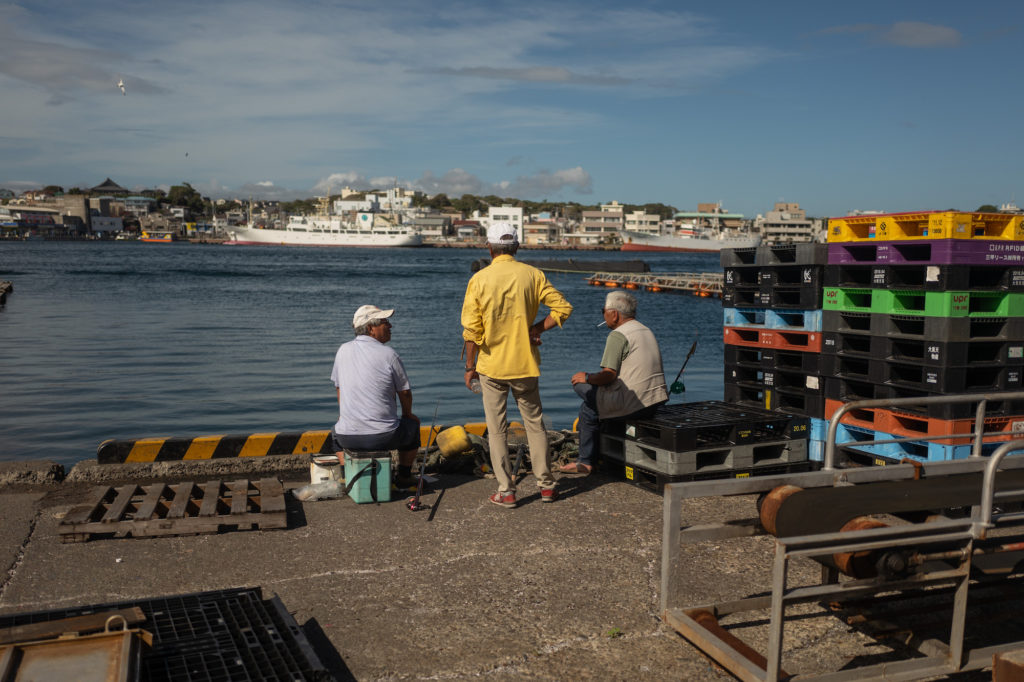
To get to the next town down the coast, Zushi, I choose a tiny alley, up the steepest part of the mountain, just behind where a few fishermen are smoking. The road is barely wide enough for a motor scooter and gains elevation fast — so fast that, in parts, the small alley has steps built into it. An old woman is walking down as I bike up next to her and she laughs at me as I almost fall off saying good morning. I’m in my lowest gear and the small pedal-assist rear wheel motor is pushing me up like some invisible hand of a giant. The joy is immense. Small homes are packed alongside the path forming a cliffside jumble. Many are old, wooden, Japanese-style with tiled roofs. Others are new, more modern, prefab boxes. Hand-pump wells are still in active use. There is a sense of unfussy lives being lived. And then I pop out the top next to Suwa Shrine into one of the most fussy, wealth-laden neighborhoods I’ve ever seen in Japan.
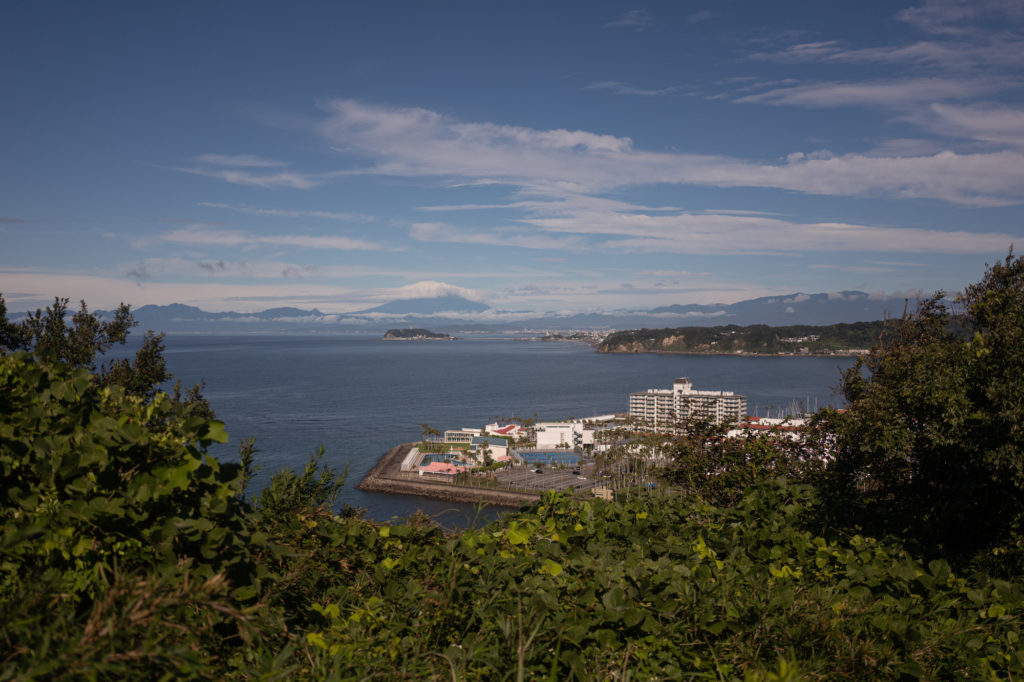
Kotsubo San-chome sits on a plateau between Zushi and Zushi Marina. It’s a managed community, but the roads are open to the public and the adjacent Osaki Park offers panoramic views up and down the entire coast. It’s worth a trip. The homes up here are palatial by any global standard. No fewer than four or five toilets in each, all surrounded by incredible gardens. Because it’s so high, it can be difficult to reach by normal bike, and awkward in a car. But on an e-bike, it seems to call out: Come, zoom, marvel at this unexpected pocket of extreme wealth.
I pass through Zushi and stop at before sunset — a cafe in Hayama — for a quick fried fish breakfast sandwich and coffee. Normally, biking to Hayama alone — about ten kilometers or so — would be enough, but today it’s just a blip on the way down the coast. I’ve come to love Hayama, although I don’t love the main coastal road, Route 134, cutting through it. It’s barely two-lanes wide, has no shoulder, lots of blind turns, and cars galore, since it functions as one of the only vehicular arteries for the area. The area can be seen in all its strange immediate post-war glory in the film Crazed Fruits. The film is uniquely abysmal (and was written by the ex-governor of Tokyo, Shintaro Ishihara!), but entertaining as a piece of anthropology. Regardless, I’ve found a backroad route into and out of Hayama. A collection of quirky alleys and riverside paths that pop out at excellent fish and chips shops and cafes and vegan restaurants.
South of Hayama, I scoot up into the town of Akiya’s northern enclave, riding freakishly steep paths that barely function as roads (too narrow), circuitous and organic in the way they wind up the mountain. At the top I find a series of farming plots and an untouched valley beyond. It’s a surprise and unexpectedly moving — this sudden burst of small-farm life — and reminds me how wild this peninsula truly was, and still is, in parts.
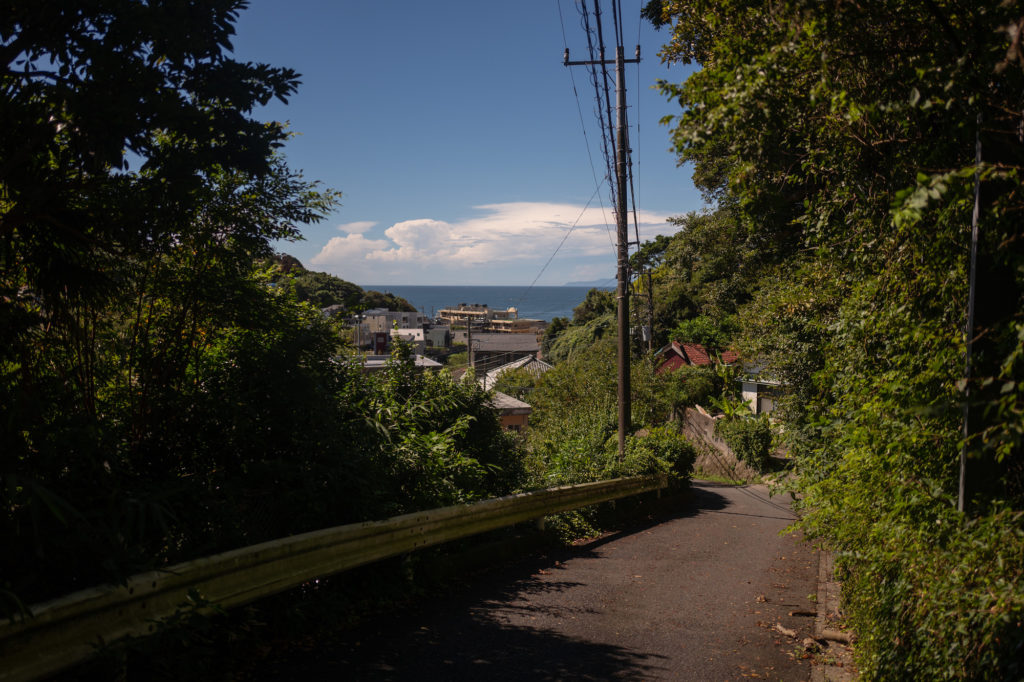

From there, past the Japan Ground Self Defense Force Camp Takeyama. Loudspeakers festoon the base. Their announcements implore in Japanese and English: Please stay inside unless absolutely necessary. After all, technically, we’re in a state of emergency. There seems to be zero compliance. People are out running, biking, shopping. Cafes and restaurants are crowded, the whole of Japan seems to be doubled down on getting vaccines while simultaneously giving up on the lockdown spirit.
From there, I cut a bit west off Route 134 to the top of a breathtaking plateau, the crown of which has been terraformed into farmland. Total delight — to crest a little hill and witness the vastness of fields yet-to-be-planted, the ocean glittering off in the distance. Farmers in their small kei-sized trucks blow past me as I try to photograph in spurts beneath the late-morning crushing sun.
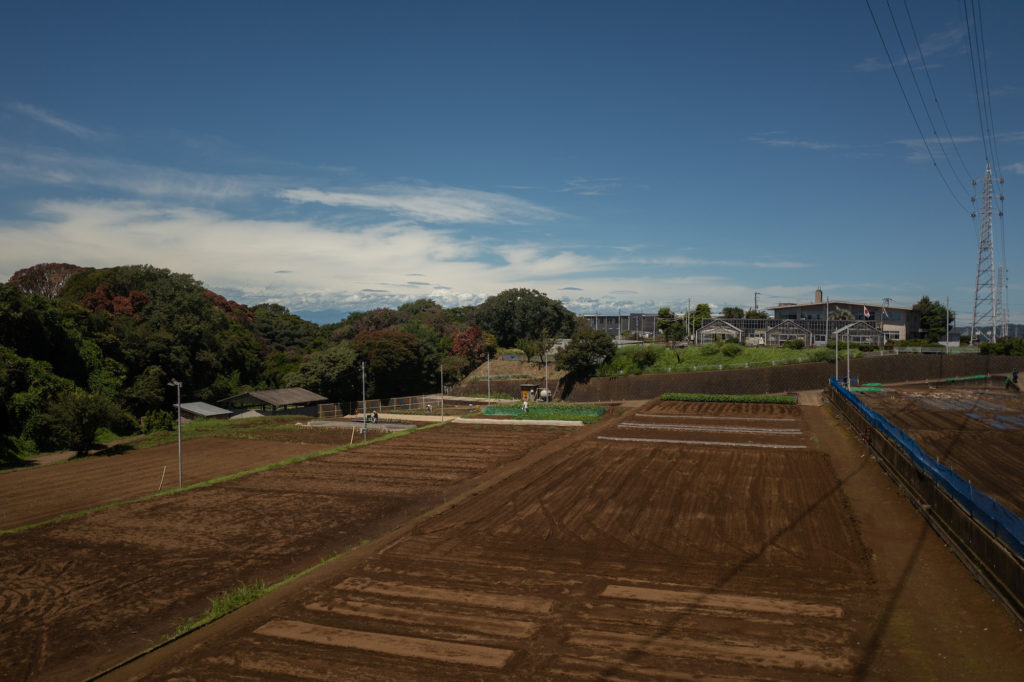
Winding roads drop me fast through residential neighborhoods into the center of the port village of Misaki. The port is visible in snatches on the way down, the edges peppered with fishing ships of varying sizes. I’m starving. The highly rated Hayama Shoten soba shop is open. It’s packed but they let me sneak in at the counter and I order a tendon bowl of deep-fried veggies on rice and cold zaru soba dipping noodles and page through a book of photographs of the town from 1955. Honestly, it doesn’t look too different from today.
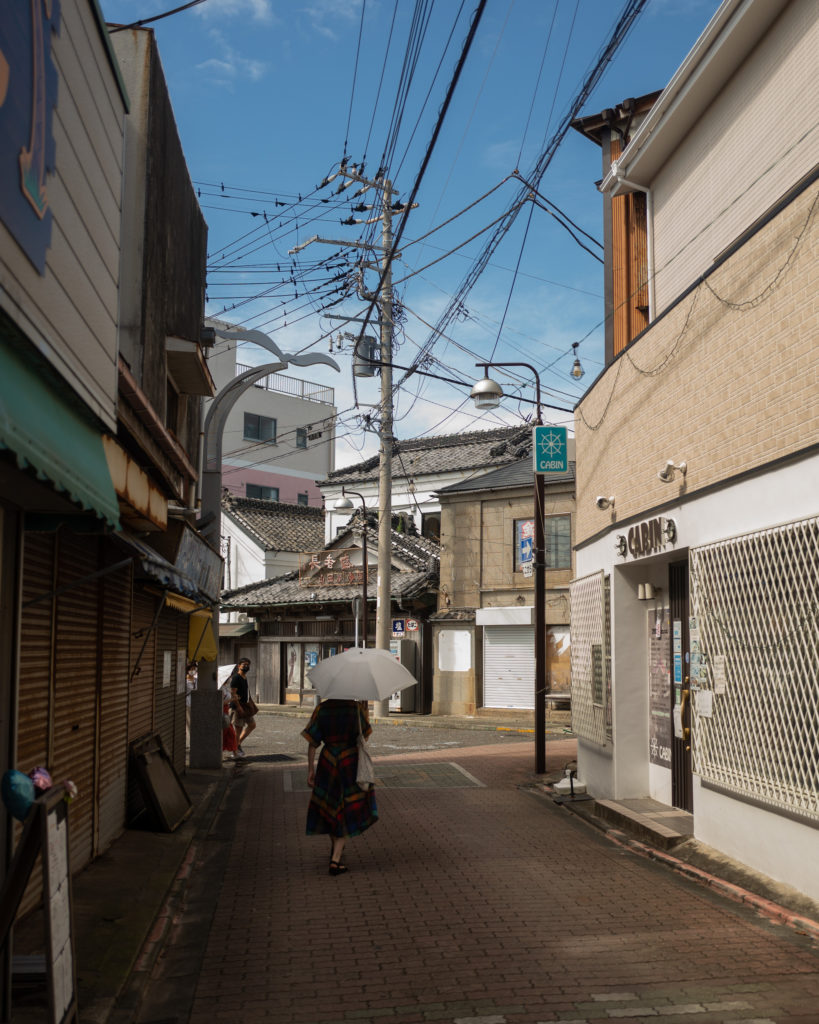
Finally, donuts. The famous Misaki Donuts. They have a shop in Kamakura, too, but I mean, come on — a donut you’ve biked forty kilometers for is a true-love donut. The bike’s battery is more than half drained, so I set up camp in the corner of the second floor of the cafe and plug in, drink an iced coffee, eat my glazed donut, and read Michael Lewis’ latest book, The Premonition for an hour.
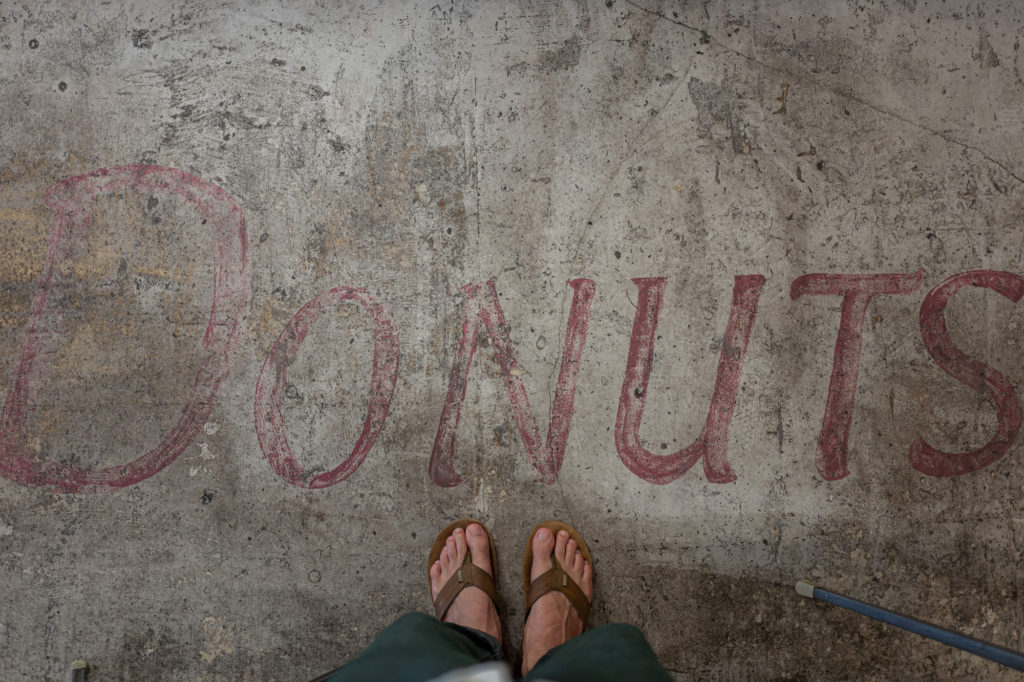
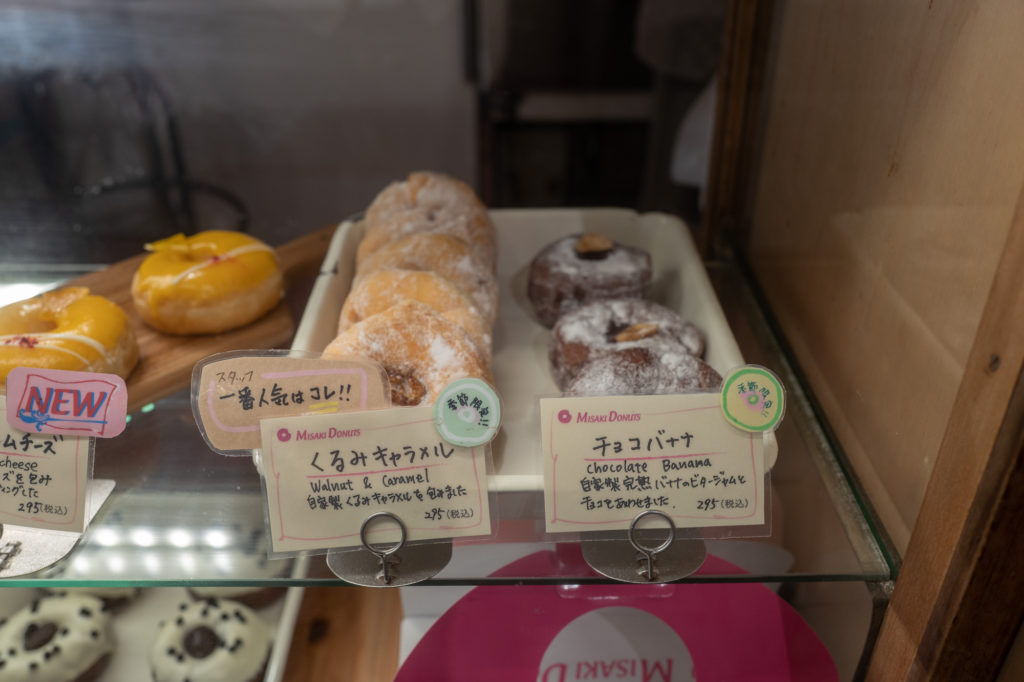
But before I start the ride home, I’m struck by the impulse to go a bit farther. The small island of Jogashima sits just off the coast of Misaki.
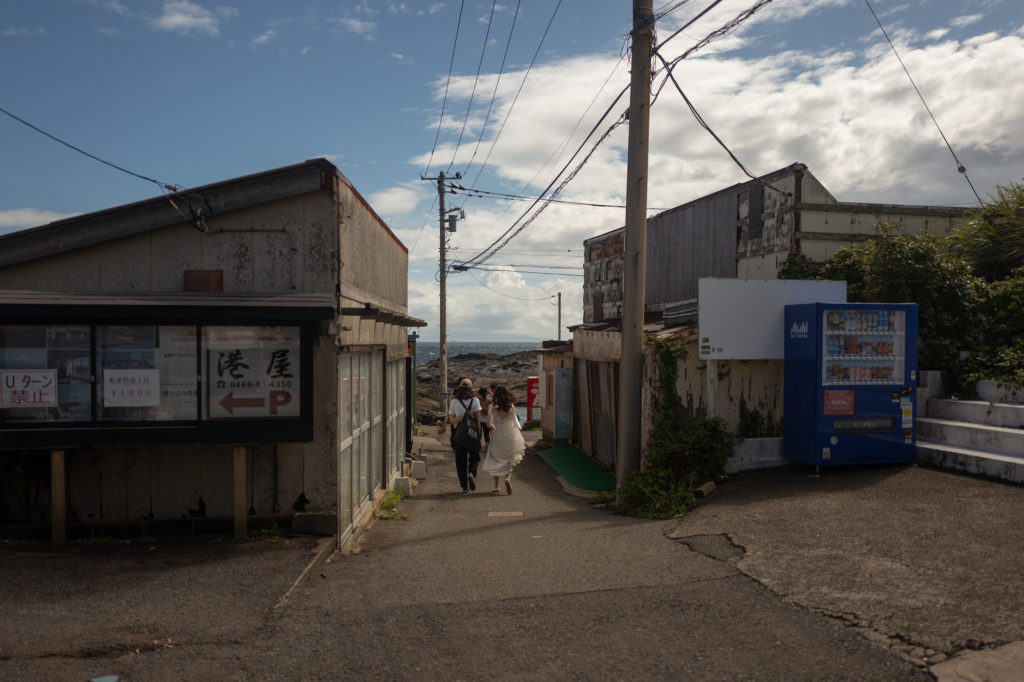
In ten minutes I’m there. The island is barely two kilometers long and a few hundred meters wide. A little blip of a thing. It has a single, tidy residential neighborhood with the weather-worn Jogashima Kainan Shrine, a few fish processing factories and a ship building warehouse. I make my way westward on a whim, towards the main lighthouse. I find a small shopping street with wooden stalls, most shuttered. A woman in a wedding dress walks the street with a photographer. I glide behind and the path leads to a costal terrace of eroded alluvial rock, layered, formed in such a way as to have created a kind of cove, around which families have pitched tents and are barbecuing. It feels like I stumbled upon some hidden eden. It’s idyllic and clouds have finally blocked the sun for the first time all day and I am able to stop without feeling like I’m being baked.
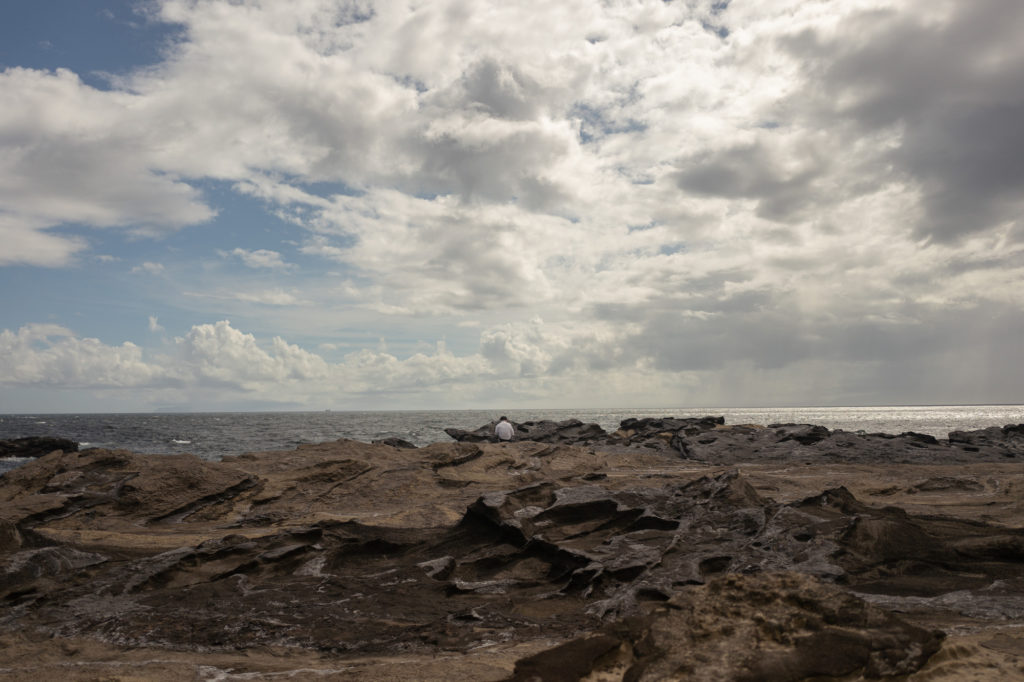
A business man sits alone on the edge of the outcropping in shirtsleeves, gazing at the ocean. Other men, shirtless with jimbei-hori upper-body yakuza tattoos bounce around and poke each other, drunk. A morbidly obese man, glabrous from head to toe, sunbathes in a speedo, while his wife plays with their son in the clear water.
I sit down and realize how truly exhausted I am. It’s been a crushing and traumatic eighteen months. The pandemic, the lockdowns. I was laid low for nearly a week by the second shot of COVID vaccine and then the weather turned to torrential rain and the UN climate report came out and Afghanistan fell apart and on and on. Geez, who isn’t tired? I stand and empty my pockets and wade into the cool water with my clothes on. A simple ablution. I realize it’s my first time touching the ocean this year. So obvious: The palliative power of wading into an infinite body of water. The floor of the cove is covered in algae-slick rocks and I turn around and lie back and think: Ah, a little baptism to christen the ride.
I felt like I could have floated in those tranquilizing cove waters forever, floated out into the greater ocean and past Hawaii, under the Golden Gate Bridge and into the port of San Francisco to greet friends I haven’t seen in years. And I was tempted to do just that. But I also had the pragmatic desire to beat the costal rush-hour traffic home. So, feeling refreshed, and with some reluctance, I dripped my way back to my bike and, salty and soaked, began the forty-kilometer ride northward along the coast, past the Defense Force base, up the hills, through Hayama and the fancy neighborhoods, thinking once again of donuts on the other side.
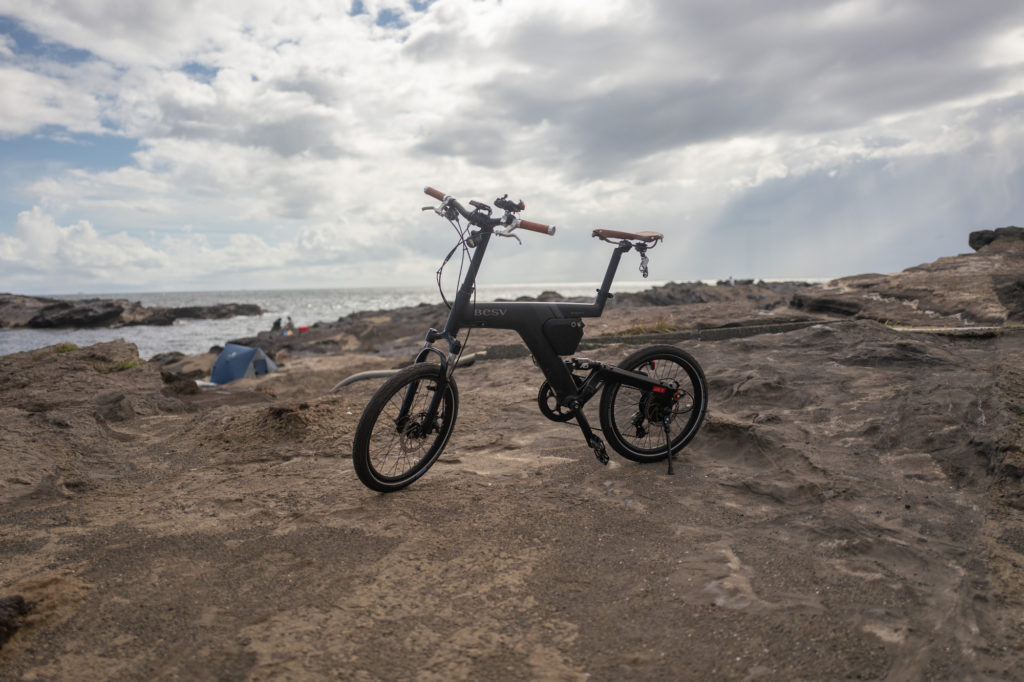
A note about the bike:
I rented a BESV PSA1 e-bike in Kyoto in September 2020 for a week and was immediately smitten. I bought my own in April (matte black, limited edition, of course). I’ve since ridden it over a thousand kilometers. It’s one of the most joy-inducing things I’ve ever owned — there’s much to love about this machine. The BESV became the impetus for this column, and prompted us to reach out to the president of BESV, who happens to have an office just down the road from Papersky. They were excited to collaborate. So while BESV is sponsoring this column, no freebees were handed out, no loaner bikes were shipped to my home in Kamakura, and the e-bike love you see here is as pure and innocent as you can imagine.












